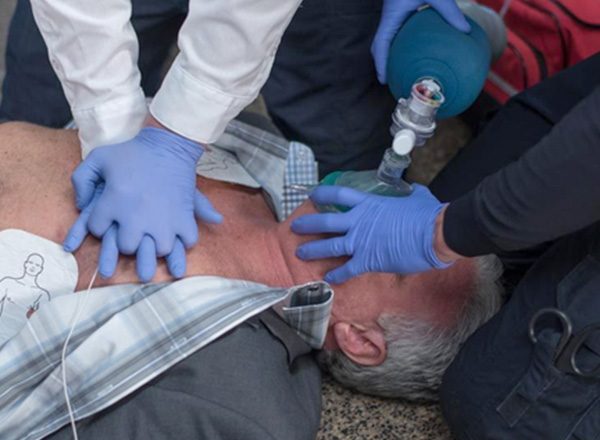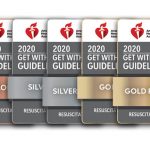Few emergencies are as urgent as out-of-hospital cardiac arrest. Besides the urgency is the need for absolute perfect performance at every link in the Chain of Survival.
Despite tremendous advances in science and technology in the past decades, cardiac arrest survival remains dismally low. Have we reached our life-saving potential as a nation? Not even close.
With an 8-fold difference in survival between low-performing communities and high-performing communities, there is much work to be done to improve the national median survival rate.
If communities rigorously implemented what has already shown to be effective, cardiac arrest survival rates would surge. This leads us to share a list of 8 practices every EMS and Fire department should commit to implement and continuously improve.
- Form a Strategic Vision and Create a Sense of Urgency. Committing an organization to improve patient’s cardiac arrest survival is a very worthwhile and realistic goal. However, to some it may feel unattainable. The organization needs clarity on the goal. Be compelling – illustrate what the future looks like when the organization improves its survival statistics by 1%, 5% and higher. Help others see the need for change through bold statements about possibility.
- Recruit an Army of Supporters. Undertaking a substantial quality improvement project is a major undertaking in change. Large-scale change can only occur when the initiative has many supporters. Think of the process of getting people to commit to support change as an enrollment. The process is far from automatic. Be inclusive and strategic when recruiting your supporters. Expect push-back and negotiation to get your project backed and prioritized. Linking the change initiative to the organization’s strategic plan helps to increase senior level backing.
- Increase Bystander CPR Prior to Arrival of Fire Responders. Prior to the pandemic, the national median incidence of bystander CPR was 41% with a range between 15% and 78% (5-fold difference). The greatest determinant of bystander CPR is a high-performing 911 Center who is committed to continuous performance improvement. Especially in the era of COVID-19, Telecommunicators play an essential role in directing, and reassuring, 911 callers how to perform compression-only CPR in an effective and safe manner.
- Implement T-CPR Time Interval Standards. Simply stated, what gets measured gets acted upon. The two most impactful measures of a 911 Centers T-CPR performance are the time intervals between call receipt and recognition of cardiac arrest and delivery of first bystander compression.
Median Time Between 9-1-1 Call and OHCA Recognition <60 seconds Median Time Between 9-1-1 Call and First T-CPR Directed Compression <90 seconds - Perform Perfect CPR. Delivery of oxygen to vital tissues during cardiac arrest depends on uninterrupted and high-quality CPR. Even small imperfections to CPR may lead to worsened blood flow and deceased likelihood of survival. The five main components of high-quality CPR are:
Chest compression fraction CCF>80% Chest compression rate 100 to 120/min Chest compression depth ≥2 inches to 2.5 inches Chest recoil Complete Recoil; no residual leaning Ventilation 10 breaths per minute w/ minimal chest rise - Prevent Skill Decay. Even in the largest EMS systems, most 911 individual telecommunicators and EMS providers participate in relatively few cardiac arrests per year. Many responders usually participate in resuscitation training every two years. When they train, the training may lack measurement, feedback and the opportunity to improve. Infrequent practice leads to skill decay and increased risk of sub-optimal care to patients. One can only be prepared to handle high-stakes/low-frequency calls through commitment to train with high-frequency in small doses.
- Support Mastery Learning. The adage “practice makes perfect” is inaccurate and insufficient for our requirements. We should instead prescribe a “perfect practice makes perfect” approach. Perfect practice, when described in an instructional design context, is known as mastery learning. It includes baseline measurement; clear learning objectives, deliberate skills practice focused on reaching the objectives, a minimum passing score and formative evaluation to measure attainment of the minimum standard for mastery.
- Measure Performance and Be Transparent. Performance improvement is an iterative process. There will be advances and setbacks. Commit to measuring performance. Do not let potentially unflattering baseline data or initial results keep you from sharing data organization wide. Remember, you are not committing to baseline performance, you are committing to improving performance. Committing to a regular cadence of communication will help to keep your change initiative front and center in the minds, and hopefully the hearts, of your organization’s members.
You now have a high-level road map for implementing proven strategies for improving cardiac arrest survival. The road to continuous improvement is bumpy, but it is a known route. Deciding to lead your organization down the road of continuous improvement is extremely worthwhile and will mean the difference to a great many of survivors who will return to their family’s loving arms.








